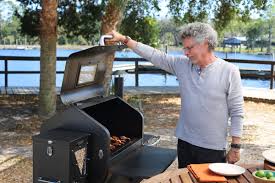Pellet grills provide a unique grilling experience by combining smoky flavors with grilling convenience. Load the wood pellets, set the temperature, and let the electronics handle the heat. Whether smoking brisket slowly or searing steaks at high temperatures, pellet grills offer versatile cooking options. Here are tips to master pellet grilling:
Choose Quality Hardwood Pellets
Premium food-grade pellets made from hardwoods provide rich smoke flavor, enhancing your grilling experience. Avoid filler woods that burn quickly with less flavor, and check the pellet composition to make sure it is made from real wood rather than byproducts. Opt for large, uniformly sized pellets that won’t crumble, as these burn more evenly. Experiment with various wood types to discover which ones complement different foods, such as beef, pork, poultry, and vegetables.
When choosing wood pellets, take into account the flavor profiles offered by different hardwoods, such as hickory for a robust taste or applewood for a milder, fruity flavor. Quality pellets are made from 100% wood with no additives and produce minimal ash, which helps maintain a clean grill and even heat distribution. Store pellets in a dry place to prevent moisture absorption.
Preheat
Pellet grills need sufficient warm-up time to reach the set temperature, as they must auger and ignite the pellets. This process builds heat and helps dry out the cooking chamber for optimal performance. Skipping the warm-up can lead to temperature fluctuations and uneven cooking results.
Maintain Steady Heat
Grills control temperatures with electric augers that feed pellets to the firepot and fans that supply oxygen. Factors such as weather, pellet quality, and food moisture affect heat stability. Keep an eye on cooking temperatures and adjust vents as needed to stay at the desired heat level. Briefly open the lid when checking food to avoid significant temperature drops. Stable heat provides reliable cooking results.
Use a Meat Thermometer
Thermometers provide accurate internal meat temperatures to determine when food reaches the desired level of doneness, regardless of grill temperature changes. They help avoid overcooking or undercooking. Instant-read thermometers offer a quick check of progress, while leave-in probes with wireless receivers monitor temperatures continuously without opening the grill.
Establish a Cleaning Routine
Ash buildup, grease drippings, and dust can impact pellet grill performance over time. Following a regular cleaning schedule maintains airflow and temperature control. Remove cooking grates and grease trays regularly for thorough cleaning. Vacuum ash from the firepot after each use. Deep clean the interior as needed, and wipe down exterior surfaces before and after use.
Learn Smoke Settings
Quality grills offer advanced smoke settings as well as basic temperature controls. They adjust pellet feed rates and fan speeds to control smoke levels. Lower smoke settings are suitable for shorter cooking times. Higher settings generate more smoke, providing intense flavor for longer cooks. Adjust the smoke level to fit your cooking time and flavor preferences.
Become Pellet Grills Master
Embrace the versatility and precision of pellet grilling. With proper setup and maintenance, a pellet grill can elevate your meals with rich, smoky flavors. Invest in a high-quality pellet grill to explore new culinary possibilities and achieve consistent results. Begin your journey with pellet grilling and enhance your cooking repertoire today.
